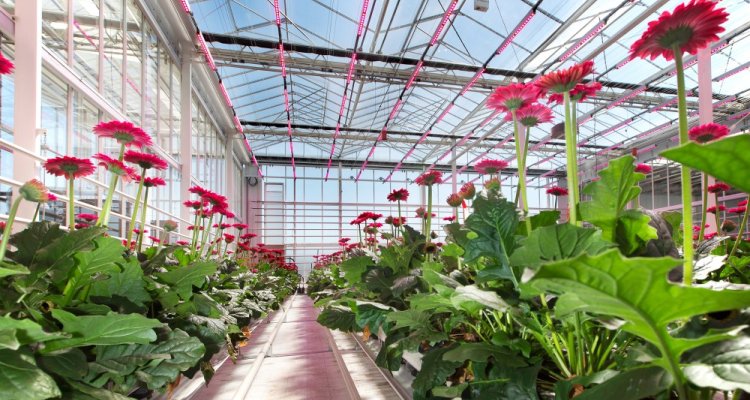
Project
GREENHOUSE2030: Sustainable production for the future
In the coming years, greenhouse horticulture businesses will have to decimate their natural gas consumption and eventually reduce it to zero. They are also faced with new guidelines on water and zero emissions for minerals and crop protection products. In the case of high energy demanding crops, major steps have been taken in recent years as shown in the Energy Innovation and Demonstration Centre (IDC),financed by the programme Greenhouse as a Source of Energy For major part of the sector, particularly the middle segment in terms of energy consumption, there are still a lot of gains to be achieved regarding the sustainability aspects energy, water and nutrient emissions and crop health.
Cultivations
To achieve the desired acceleration here, a demonstration greenhouse was put into use in Bleiswijk in April 2019. Four different cultivations were carried out in sections of 350 m2 to demonstrate the possibilities and challenges of fossil and emission-free cultivation: strawberry, gerbera, freesia and pot Anthurium.

Emissions
In the sustainable design of the greenhouse, there were three leading themes: the CO2 emissions, water & nutrients and crop protection.
- The greenhouse does not use gas for heating. It is a so-called all-electric greenhouse including full LED lighting. A heat pump is used to dehumidify the greenhouse. This way, latent heat is recovered and the greenhouse remains more closed in winter and spring. No own electricity is generated for the greenhouse; it is purchased as green electricity.
- Also, the greenhouse does not discharge drain and condensation water into the sewer; everything is reused and recirculated. So no nutrients are lost, the water is used optimally and no residues from crop protection products end up in the sewer. Ozone is used to disinfect the water, so the water can safely reused in cultivation.
- Finally, crop protection is fully integrated, using natural control agents as much as possible.
Demonstration
In the greenhouse, growers and researchers can learn how to cultivate fossil-free and emission-free. That sounds easier than it is. Every crop still has its own challenges. For example, in practice the Freesia is still a soil grown crop that we started growing in a substrate to be able to close the watercourse. Also, there are no experiences with full-LED lighting for these crops, and for the first time there is active dehumidification.



